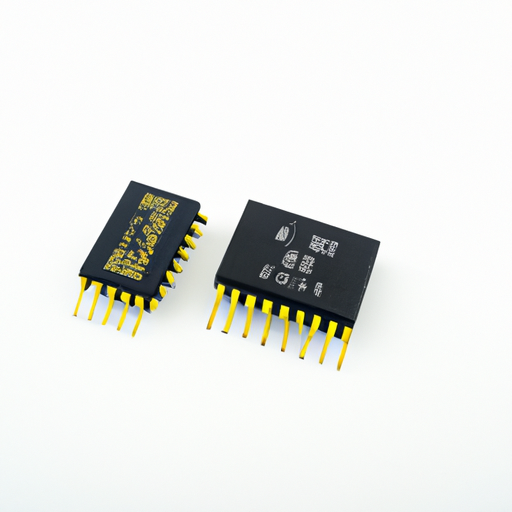Certainly! Buffers, drivers, receivers, and transceivers are fundamental components in electronic circuits, particularly in communication systems and digital signal processing. Below, I’ll highlight the core functional technologies and provide application development cases for each of these components.
1. Buffers
| Purpose: Buffers are used to isolate different parts of a circuit, preventing loading effects and ensuring signal integrity. They can also provide signal amplification.Purpose: Buffers are used to isolate different parts of a circuit, preventing loading effects and ensuring signal integrity. They can also provide signal amplification. |
| Types: Voltage buffers (voltage followers), current buffers, and line drivers.Types: Voltage buffers (voltage followers), current buffers, and line drivers. |
| Key Characteristics: High input impedance, low output impedance, and the ability to drive heavy loads.Key Characteristics: High input impedance, low output impedance, and the ability to drive heavy loads. |
| Signal Isolation: In a microcontroller application, a buffer can be used to isolate the microcontroller's output from a high-capacitance load, ensuring that the signal remains intact and unaffected by the load.Signal Isolation: In a microcontroller application, a buffer can be used to isolate the microcontroller's output from a high-capacitance load, ensuring that the signal remains intact and unaffected by the load. |
| Level Shifting: Buffers can be used to shift voltage levels between different logic families (e.g., from 3.3V to 5V logic), facilitating communication between devices operating at different voltage levels.Level Shifting: Buffers can be used to shift voltage levels between different logic families (e.g., from 3.3V to 5V logic), facilitating communication between devices operating at different voltage levels. |
| Purpose: Drivers are designed to provide sufficient current to drive loads such as LEDs, motors, or other high-capacitance devices.Purpose: Drivers are designed to provide sufficient current to drive loads such as LEDs, motors, or other high-capacitance devices. |
| Types: LED drivers, motor drivers, and line drivers.Types: LED drivers, motor drivers, and line drivers. |
| Key Characteristics: High output current capability, fast switching speeds, and thermal management features.Key Characteristics: High output current capability, fast switching speeds, and thermal management features. |
| LED Lighting: In smart lighting systems, LED drivers can be used to control brightness and color temperature, allowing for dynamic lighting effects and energy efficiency.LED Lighting: In smart lighting systems, LED drivers can be used to control brightness and color temperature, allowing for dynamic lighting effects and energy efficiency. |
| Motor Control: In robotics, motor drivers are essential for controlling the speed and direction of DC motors, enabling precise movement and automation in robotic applications.Motor Control: In robotics, motor drivers are essential for controlling the speed and direction of DC motors, enabling precise movement and automation in robotic applications. |
| Purpose: Receivers are used to detect and process incoming signals, converting them into a usable form for further processing.Purpose: Receivers are used to detect and process incoming signals, converting them into a usable form for further processing. |
| Types: Analog receivers, digital receivers, and RF receivers.Types: Analog receivers, digital receivers, and RF receivers. |
| Key Characteristics: Sensitivity, selectivity, and noise performance.Key Characteristics: Sensitivity, selectivity, and noise performance. |
| Wireless Communication: In a wireless sensor network, RF receivers can be used to capture signals from various sensors, allowing for data aggregation and processing in smart home or industrial applications.Wireless Communication: In a wireless sensor network, RF receivers can be used to capture signals from various sensors, allowing for data aggregation and processing in smart home or industrial applications. |
| Data Communication: In UART communication, receivers are used to decode incoming serial data, ensuring accurate data transfer between devices, such as between a microcontroller and a computer.Data Communication: In UART communication, receivers are used to decode incoming serial data, ensuring accurate data transfer between devices, such as between a microcontroller and a computer. |
| Purpose: Transceivers combine the functionality of both transmitters and receivers, allowing for bidirectional communication.Purpose: Transceivers combine the functionality of both transmitters and receivers, allowing for bidirectional communication. |
| Types: Ethernet transceivers, RS-232 transceivers, and wireless transceivers.Types: Ethernet transceivers, RS-232 transceivers, and wireless transceivers. |
| Key Characteristics: Full-duplex or half-duplex operation, integrated signal processing, and protocol support.Key Characteristics: Full-duplex or half-duplex operation, integrated signal processing, and protocol support. |
| Networking: In Ethernet applications, transceivers enable communication between devices over a network, supporting various speeds and protocols, essential for data centers and enterprise networks.Networking: In Ethernet applications, transceivers enable communication between devices over a network, supporting various speeds and protocols, essential for data centers and enterprise networks. |
| Wireless Communication: In IoT applications, wireless transceivers facilitate communication between devices and cloud services, enabling remote monitoring and control, such as in smart agriculture or smart city applications.Wireless Communication: In IoT applications, wireless transceivers facilitate communication between devices and cloud services, enabling remote monitoring and control, such as in smart agriculture or smart city applications. |
2. Drivers
3. Receivers
4. Transceivers
Conclusion
Buffers, drivers, receivers, and transceivers play critical roles in modern electronic systems. Their ability to manage signal integrity, drive loads, and facilitate communication makes them indispensable in various applications, from consumer electronics to industrial automation. Understanding their core technologies and application cases can help engineers design more effective and reliable systems, ultimately leading to innovations in technology and improved user experiences.






